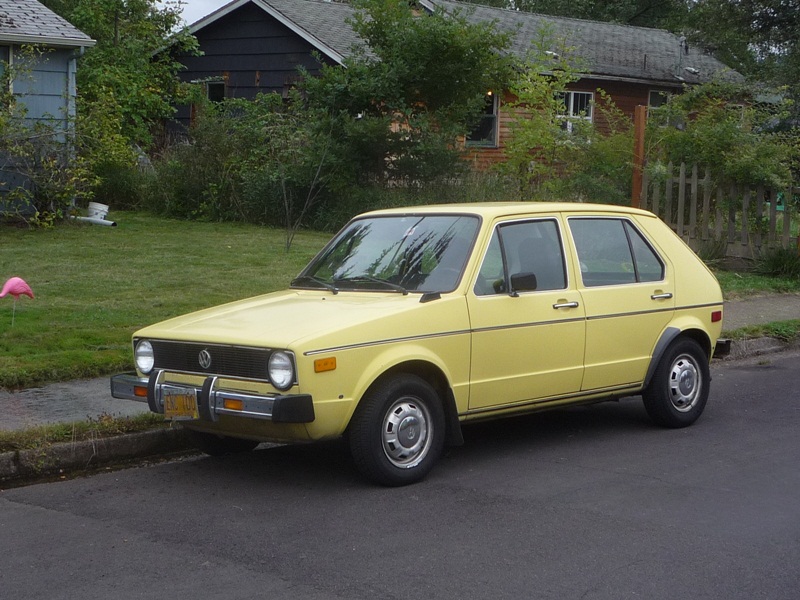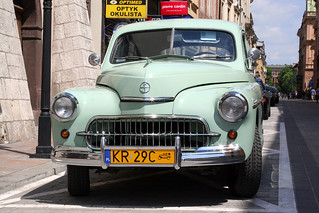|
|
Post by pieter on Apr 3, 2014 10:36:33 GMT -7
|
|
|
|
Post by Jaga on Apr 3, 2014 10:42:11 GMT -7
Pieter, yes, these are perfect pictures. Recently there are too many advertisements, so that the original colors are disappearing.
|
|
|
|
Post by pieter on Apr 3, 2014 10:58:01 GMT -7
 Poznań November 1989 Poznań November 1989This is how I remember Poznań (only a few years earlier, the late seventies, 1984 and 1987, when I was in that city for the last time) |
|
|
|
Post by pieter on Apr 3, 2014 11:07:57 GMT -7
|
|
|
|
Post by Jaga on Jul 31, 2014 11:31:28 GMT -7
Richard Poremski sent more Old Country pictures. Below is one of them: Exhibiting Equine Curiosity (Carriage horse looking askance at the photographer)Old Town, Warsaw, Poland, May 16, 1976 |
|
|
|
Post by Jaga on Jul 31, 2014 11:33:33 GMT -7
Sisters of the Wooden NecklaceTwo girls wearing the identical wooden necklace Old Town, Warsaw, Poland, May 16, 1976
|
|
|
|
Post by Jaga on Jul 31, 2014 11:35:31 GMT -7
Polish small Fiat - a pride of many Poles in 70s. So called "maluch", meaning "baby fiat" below  |
|
|
|
Post by Jaga on Aug 6, 2014 8:55:50 GMT -7
Making a New FriendYoung boy holding paw of old dog Krynica, Poland, May 21, 1976
|
|
|
|
Post by Jaga on Aug 6, 2014 8:57:50 GMT -7
These are very good pictures showing Poland almost 40 years ago. It is hard to imagine how much changed since these times! Snow-Dusted Farmer’s MarketEntrance to a farmer’s market Krynica, Poland, May 21, 1976 |
|
|
|
Post by Jaga on Aug 6, 2014 21:48:47 GMT -7
Pol76 No Refrigeration NeededPhoto: Vegetable stall at farmers’ market Krynica, Poland, May 21, 1976 |
|
|
|
Post by pieter on Aug 7, 2014 8:29:28 GMT -7
Dear Jaga, Wonderful black and white images which give an insight view in how life was in the Peoples republic during the seventies. I only knew Poznań back then, and the places my parents or Polish family brought me to. But I remember the Fiat 126 (Type 126) from that seventies and eighties era. They were nice little cars, but made some noise. I remember familymembers having one or their friends. It was one of the few cars available in Poland in that time. Some Poles had second hand Western cars, like a familymember who took us from the station in an old Volkswagen Golf. Western cars were to expensive to buy back then due to the low value of the złoty. The złoty today has a different value then the złoty of the Polish Peoples republic.  Second hand Western-European cars could be seen in Poland too. Second hand Western-European cars could be seen in Poland too.When we drove to Poland by car via the Bundesrepublic Deutschland ( West-Germany), and the Deutsche Demokratische Republik (the DDR: East-Germany) we often saw tiny Polish cars (Polski Fiat's 126 and others), with large trailers with often old or damaged Western cars. We immediately understood that these Poles would repair these cars in Poland and make ' new cars' of them in ' second hand' versions. They would dent out the car, repaint it, repair the motor and probably imitate Western parts in their own garages or studio's. These Poles ofcourse also went to the West to search for spare parts for their second hand Western-European Volkswagen's, Citroën's and Volvo's. Ofcourse you had a lot of Warszawa's, Polonez FSO cars, and other Eastern-European cars like Skoda, Wartburg, Trabant and probably Lada too. But they were probably not so easily available in Poland. I saw very old Cuban style cars in Poznań, and these were old Warszawa cars. Often rusty and very shabby, but some were in a very well shape. Their owners must have kept good care of them back then.  And old Opel Kadett inj communist Poland And old Opel Kadett inj communist Poland An old Warszawa car An old Warszawa car Despite the fact that " maluch" was a very small city car, it was the only choice for most families, playing the role of a family car. During holidays, it was common to see four-person families driving PF-126s abroad with huge suitcases on a roof rack; sightings of PF-126s towing a small Niewiadów N126 caravan specially designed for the PF 126 were also occasionally reported. PF 126p production, however, was not sufficient and the PF 126p was distributed through a waiting list. Usually families had to wait a couple of years to buy a car. A coupon for a car could also be given by the authorities based on merit.  PF-126s towing a small Niewiadów N126 caravanNicknames PF-126s towing a small Niewiadów N126 caravanNicknamesIn Poland it is called Maluch, which literally means " small one" or toddler, as well as mały Fiat (" small Fiat"), in contrast to Fiat 125p, called duży Fiat (" big Fiat"). In some regions, it is also called Kaszlak literally " cougher" (derived from kaszel meaning " cough", as its engine's sound resembles a cough when it is started). Cheers, Pieter |
|
|
|
Post by Jaga on Aug 7, 2014 15:11:42 GMT -7
Pieter,
great pictures. I really enjoyed it, but I would be afraid of driving this carriage with two wheels.
|
|
|
|
Post by pieter on Aug 7, 2014 16:11:56 GMT -7
Pieter, great pictures. I really enjoyed it, but I would be afraid of driving this carriage with two wheels. I understand your fear. Lately I helped someone with moving furniture from one town to another one via a complicated route of highways, roads and ally's and it required some driving skills to drive with such a construction in narrow streets. ( I haven't got a lot of experience with trailers, so it was a challange for me) A Caravan is vulnerable for sidewinds, slipery roads and large amounts of water on the road (Aqua plaining) etc. Ofcourse Poles used the Niewiadów N126 caravan mostly under good weather conditions, but I remember a Monsoon (Monsun) kind of heavy rainfall in the Warsaw of August 2006. In a very short period of time extreme amounts of water came out of the sky, and the road next to the Warsaw Central Station, in the environment of the Palace of Culture changed in a small river all of a sudden. I had to take shelter in a Subway (Metro) entrance. I can understand that when you were driving your Polski Fiat 126 with the the Niewiadów N126 attached to it, and you suddenly got such a Polish Monsoon, one a coarse Polish highway with breaches, slits and cracks, that you would not drive relaxed or safely. Today ofcourse the Polish roads are in much better shape, since there has been a lot invested in new highways and roads. But stil I hear stories of Poles and foreigners about how bad the Poles drive and that there are a lot of trafffic accidents. Cheers, Pieter |
|
|
|
Post by Jaga on Aug 7, 2014 21:16:23 GMT -7
Pieter, yes, Polish roads are better than they were before joining EU. +++When we drove to Poland by car via the Bundesrepublic Deutschland (West-Germany), and the Deutsche Demokratische Republik (the DDR: East-Germany) we often saw tiny Polish cars (Polski Fiat's 126 and others), with large trailers with often old or damaged Western cars. We immediately understood that these Poles would repair these cars in Poland and make 'new cars' of them in 'second hand' versions. They would dent out the car, repaint it, repair the motor and probably imitate Western parts in their own garages or studio's. These Poles ofcourse also went to the West to search for spare parts for their second hand Western-European Volkswagen's, Citroën's and Volvo's.+++ Poles had to adjust, we had quite many Mercedes cars in 80s, since they were easily repaired by skilled workers  without buying spare parts, but we also had some thieves who were stealing cars for spare parts.... |
|
|
|
Post by pieter on Aug 8, 2014 8:01:11 GMT -7
www.theartsdesk.com/film/dvd-man-marbleThe Polish photographer Bogdan Dziworski. Photo's of Poland in the seventies. Photograph captured with 35 mm Leica camera in late seventies in Poland. Photograph captured with 35 mm Leica camera in late seventies in Poland. Musician and a skipping rope Musician and a skipping rope Drunkards Drunkards   Street, accordionist Street, accordionist Man and child Man and child Beach scene, Baltic Sea (Morze Bałtyckie) Beach scene, Baltic Sea (Morze Bałtyckie) Girl with a ring Girl with a ring Photographer Photographer Street scene Street scene
|
|